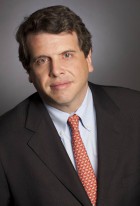The cost to trade U.S. equities via people has held steady during the last year at 12 basis points while exchange traded funds (ETFs) , which are gaining in popularity and provide more stability, are getting more expensive to trade.
In its latest report, Have Emerging Markets Emerged? An In-Depth Look at the Changing Landscape of Global Equity Commission Rates, market consultancy Greenwich Associates has noted that headline commission rates have remained largely unchanged in the developed world. In the U.S. market-by far the largest by capitalization-Greenwich said the buy side reports an average high-touch bundled rate of slightly more than 14 basis points (3.7 cps).
Although curbed by the higher rates paid in smaller countries such as Israel and much of Southeast Asia, rates in developed markets as a whole average 15.6 bps-a bit higher than the 14.9 bps average in developed Europe, Greenwich noted. Even in the all-in blended average commission rates, which take into account high-touch, algorithmic and portfolio trades, we saw little change in the 10.9 bps developed-market average.
For the US – 2016 provided plenty of excitement and volatility, equity markets included. The commission rate backdrop included such notable geopolictical events such as the Brexit vote, which caused heightened uncertainty. Also, the U.S. presidential election results ignited the current market rally, resulting in all-time market highs. Lastly, regulatory pressures from both the U.S. and abroad (think MiFID II) have contributed to increased attention to best execution and research payment practices.

In the U.S., Greenwich looked at deviations from the traditional single-stock and portfolio-trading commission rates by reporting rates for exchange-traded funds, commission-sharing agreements, larger-cap versus smaller-cap trades, and trades involving capital commitment.
In its calculations, Greenwich noted that the high-touch execution rate accounted for 46% of the high-touch bundled rate, with the remainder was tacked on to pay for research. On algorithmic trades, the execution-only rate represents 36% of the combined execution and research tack-on, as an increasing proportion of institutions tack on the same amount for research, be it a high-touch or low-touch trade.
As MiFID II gains steam toward the end of 2017, we may see further alignment of tack-on rates across execution channels, the consultancy noted.
U.S. Commission Management Trade Rates
The high-touch execution rate for commission management trades averages 1.7 cents per share (cps), while the algorithmic execution rate averages 1 cps. The research tack-on portion averaged 2.1 cps for high-touch trades and 1.7 cps for algorithmic trades. By comparison, these rate structures nearly match their single-stock counterparts. It appears that even when a commission-management program is used to compensate brokers for execution and research services, the rate at which institutions pay those brokers remains unchanged.
ETF vs. Single-Stock Rates
Although similar in composition, Greenwich noted that ETFs are traded at a higher rate than their single-stock counterparts. Reported U.S. high-touch and algorithmic execution rates were 2.2 cps and 1.2 cps respectively, for ETFs. These are 30% and 9% higher than their single-stock counterparts.
It appears traders are willing to pay a higher rate to reduce market movement, ensure timely execution and to access capital, report author William Llamas, Associate Director at Greenwich Associates noted.
Also, Nicholas Colas, chief market strategist at Convergex said the ETF popularity has also been a beneficiary of the move to passive investing over the last 20 years. He noted that as of the end of last week, US ETFs had $2.8 trillion in assets under management and that there are now 1,993 ETFs listed in US markets.
Furthermore, year-to-date money flows into US listed ETFs total $80.8 billion, of which $42.2 billion was invested in January and $38.6 billion month-to-date in February. These flow rates are well ahead of the 12 month average of $30.5 billion.
There is, of course, no guarantee these flows will continue, Colas said.
Investors Pay Up for Capital
Last year, when Greenwich asked respondents if they paid a different rate for a trade executed via a natural cross, as a working order, or using a commitment of capital, the consultancy had insufficient data to see any trend. However, more U.S. institutions reported and revealed that high-touch trades requiring capital averaged 2.7 cps for execution and 2.2 cps for a research tack-on. The execution rate is almost 60% higher than the reported U.S. single-stock high-touch execution rate of 1.7 cps. It seems that investors are willing to pay up for trades that provide access to capital.
The reports data was collected between September and November of 2016. Greenwich Associates interviewed heads of equity trading at North American, European, and Asian institutions regarding typical commission rates paid across 77 different markets. Desks were asked for their overall bundled rate, execution-only rates for both high-touch and electronic trades, tack-on rates for both high-touch and electronic trades, and portfolio trading and all-in blended rates across developed, emerging and frontier markets.



